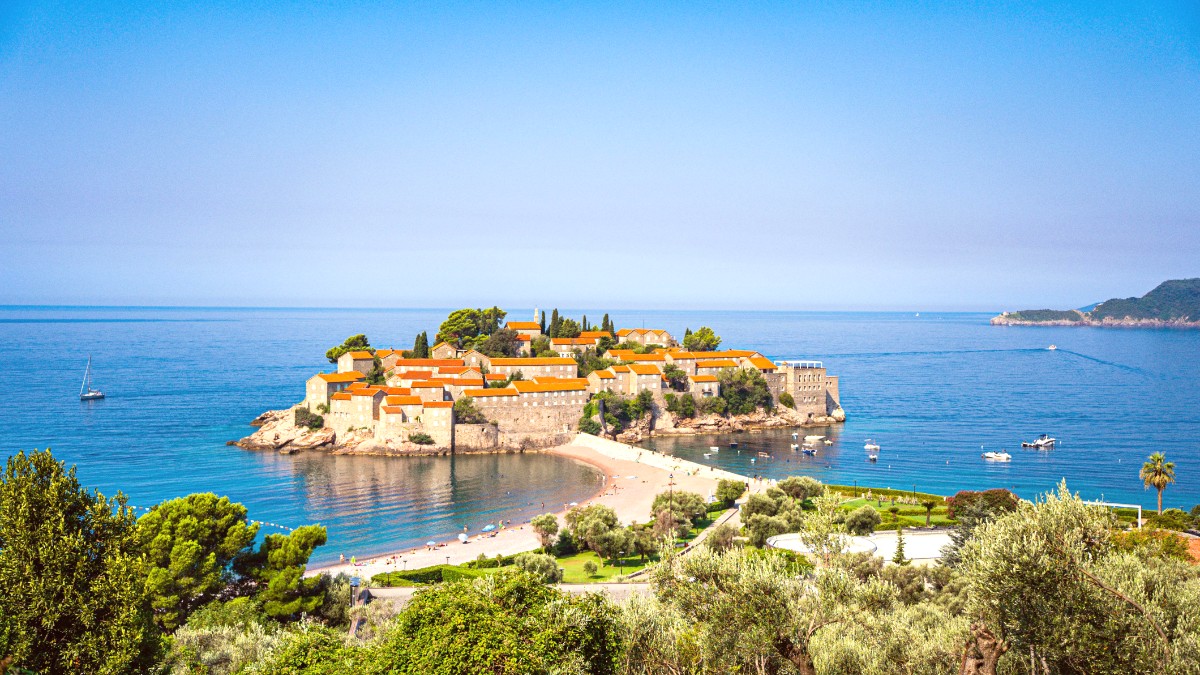
Montenegro
Witness the dramatic meeting of mountains and sea, and the iconic silhouette of Sveti Stefan.
Explore the labyrinthine streets of Budva Old Town and climb the walls of Kotor.
Interactions with locals in guesthouses or cafes reveal a genuine warmth and generosity.
Rejuvenating sensory experiences from the environment.
A connection to the region's rich and ancient past.
A broadening of cultural perspective through interactions.
Your journey contributes positively to the destination's future. Responsible practices preserve its allure.
Using a few Montenegrin words demonstrates respect and opens doors to more authentic interactions.
Be mindful of local etiquette, especially regarding dress (modesty in religious sites), noise levels, and photography (ask permission for individuals).
Respect the privacy of local residents and their property.
Use designated bins for trash. If recycling is unavailable, minimize consumption and carry out waste from natural areas.
Conserve water and energy during your stay. Turn off lights and air conditioning when leaving your accommodation.
Stay on marked trails when hiking. Do not disturb wildlife or remove natural elements.
Make a conscious effort to spend your money at locally owned hotels, restaurants, shops, and tour operators.
Seek opportunities to interact with local people. These exchanges lead to cultural understanding.
Research local practices and issues to make informed choices that benefit the community.
Responsible tourism preserves Sveti Stefan's appeal for future visitors.
Montenegro serves as a gateway to exploring the wider Balkan region, or it inspires a return visit.
Continue north along the Adriatic coast to Dubrovnik, a famous walled city in Croatia.
Venture to Slovenia for its Julian Alps, pristine lakes (Bled, Bohinj), and extensive hiking trails.
Explore Bosnia & Herzegovina's historically rich capital, Sarajevo.
Seamless travel through neighboring regions.
This includes Montenegro with Albania, Kosovo, or Serbia for a rich historical and cultural journey.
Such combinations expand your perspective on the region's diversity.
Planning these routes simplifies logistics.
Different seasons or experiences for future trips.
Consider returning to Sveti Stefan during May-June or September-October for cooler weather and fewer crowds.
Plan a return visit to Montenegro's northern mountains in winter for skiing, snowshoeing, and serene landscapes.
Each season offers an unique view of Montenegro's beauty and activities.
Further exploration of Montenegro's unique characteristics.
Variations in Montenegrin speech add to the local color.
Discover traditional stories and music that shape the region's identity.
Seasonal celebrations and events provide insight into Montenegrin life.
Ancient trees and local olive oil production are part of the coastal heritage.
Explore local wine regions and enjoy tastings of unique Montenegrin wines.
The Adriatic coast boasts unique plant life and natural beauty.
Sveti Stefan’s beauty and story remind us of travel’s allure.
May your journeys inspire new perspectives and a continued desire to explore the world responsibly.